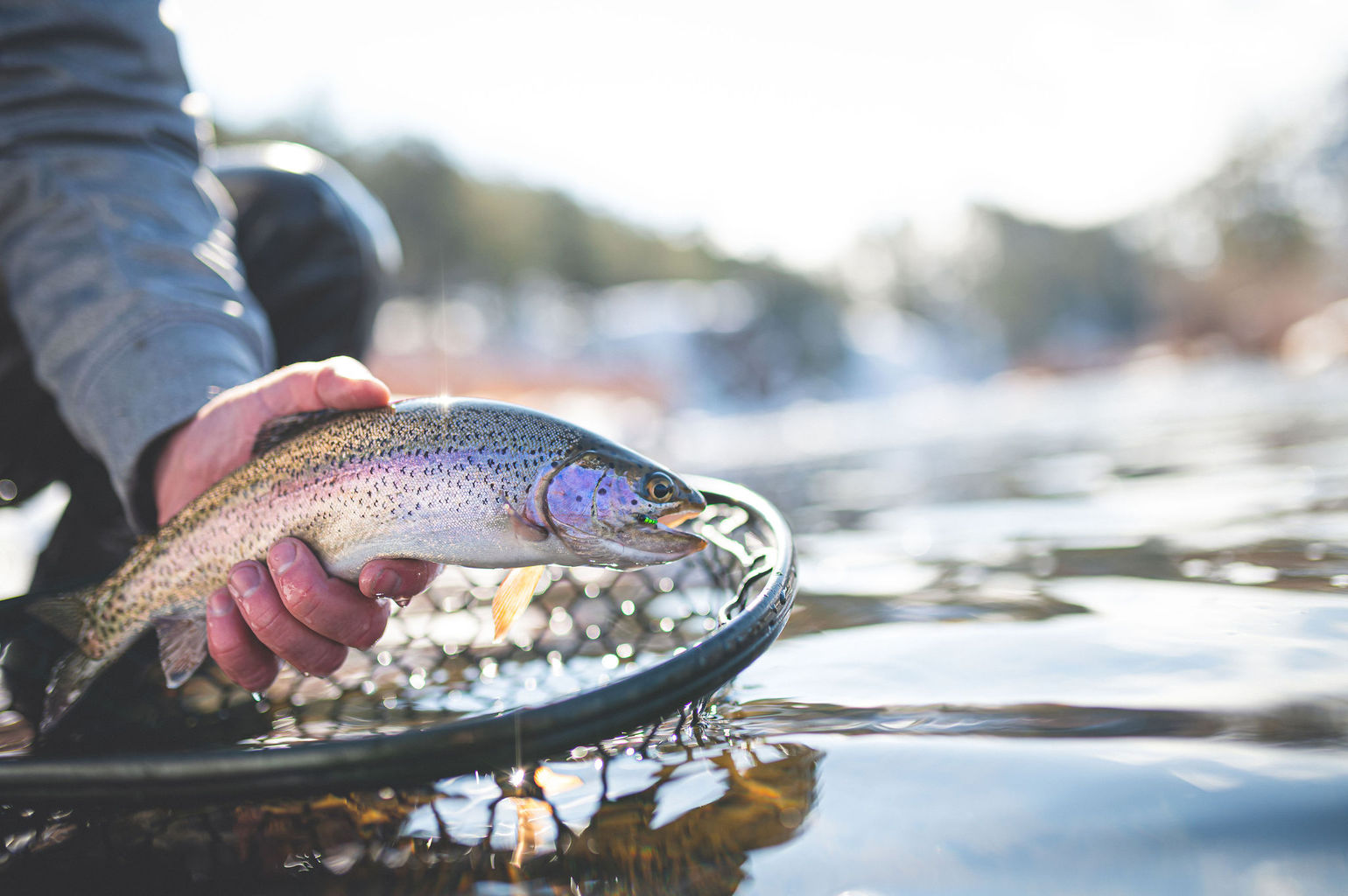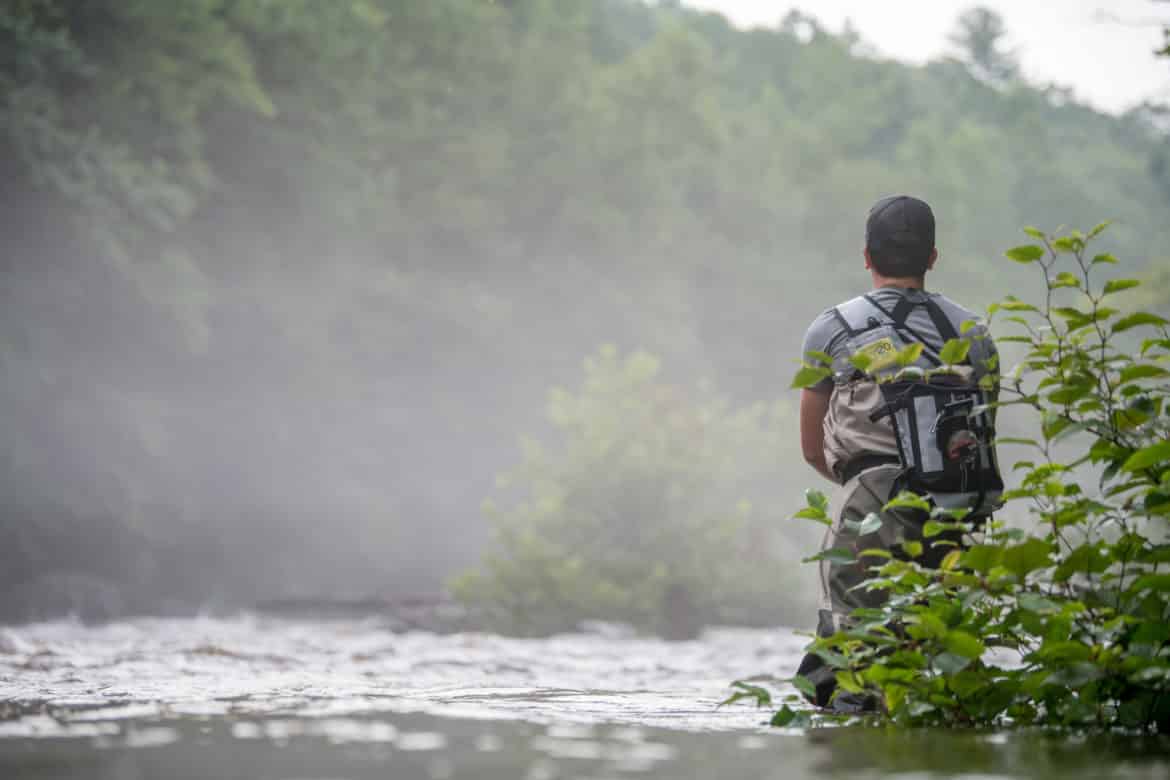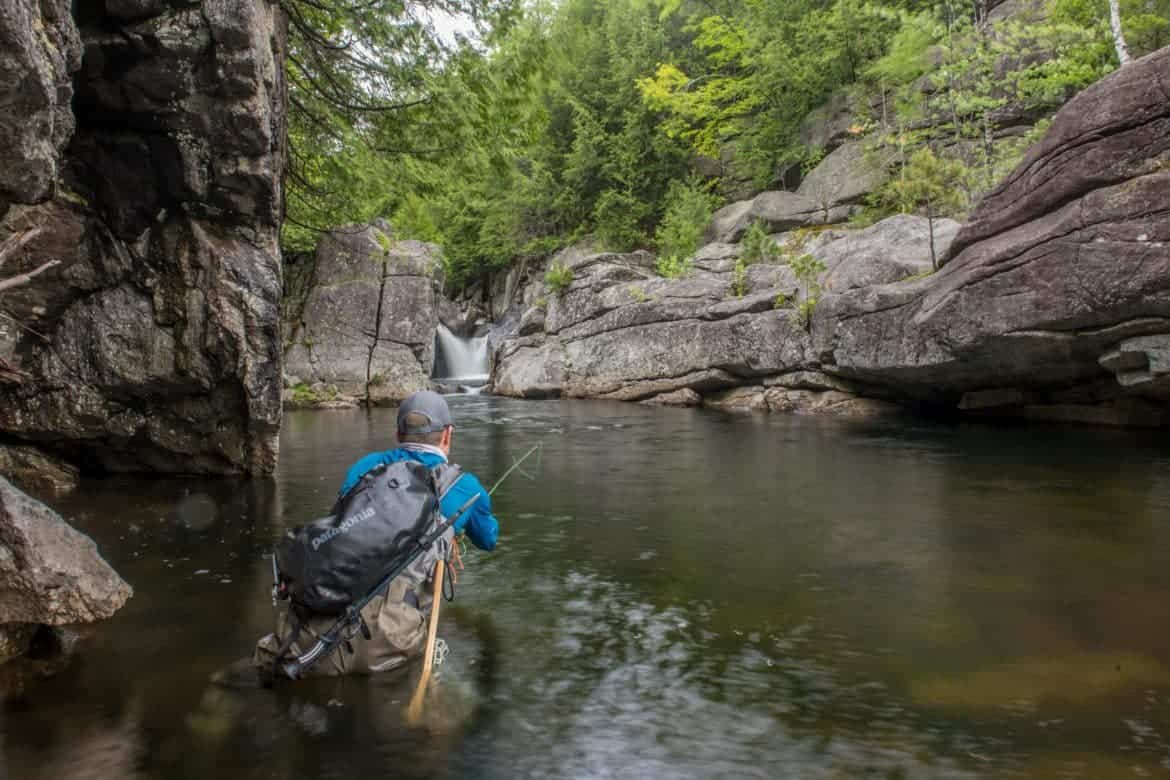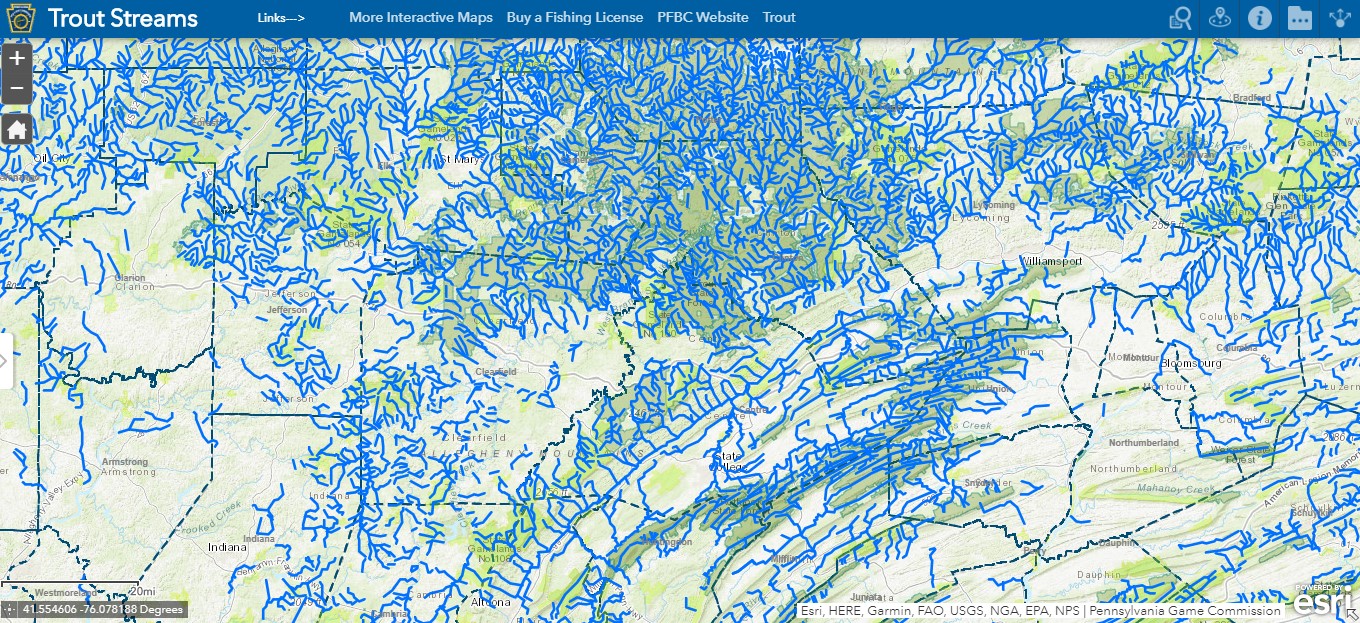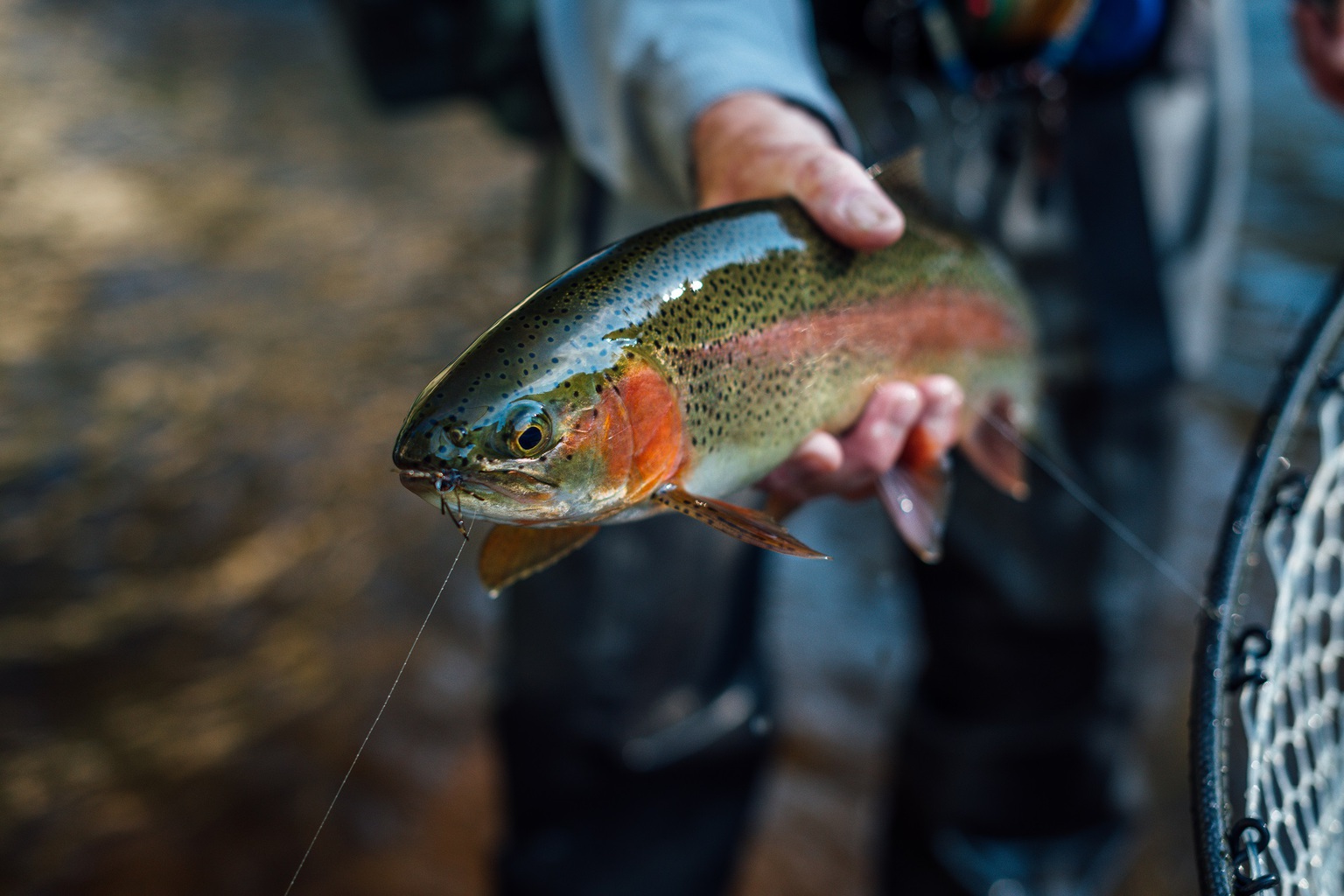How to Catch Trout on Stoneflies
For all of the squinting into fly boxes trying to locate the size #26 midge that goes on during winter, that goes out the window when it comes time to fish stoneflies!
Trout are constantly in a caloric struggle of consuming versus conserving, and as such they love feeding on things that provide them a healthy dose of protein. Stoneflies do just that, and that makes them a staple in the box of fly anglers everywhere. They’re big, fairly prevalent when the water pH and conditions allow it, and as an added bonus are easy for folks to tie on their tippet! Just because trout love them doesn’t always mean catching them on stoneflies is easy, however. As with any other imitation, knowing how and when to fish them is the key to consistent success!

Nymphs
Probably the most popular (for good reason) way to fish stoneflies is in their nymph form. The flies are often weighted with a bead or lead wrapping, making them a prime candidate for the point fly in a multi-nymph rig or when targeting fast water. Patterns like the Pat’s Rubber Legs usually come in a variety of colors to imitate different stonefly hatches, and their ability to sink fast and push water with the rubber legs makes them a deadly trout fly. Even though it’s sometimes not possible to observe this happening, fast water can push nymphs through a run ahead of an indicator and severely limit the effectiveness of the rig. That’s lessened by using heavy stonefly nymphs since they will sink fast and pull the trailing flies down behind it. The weight of the flies also helps limit how much extra split shot is needed, because the less the better when it comes to adding extra weight!

Dries
When anglers think stonefly the first mental image is usually big, bushy, or foam flies tied on a giant hook. While that’s often the case, there are times in the year when smaller stoneflies hatch and this is a terrific target to throw dries on a favorite stream or river where these bugs are common. The Yellow Sally is a great example of this, as is the early black stonefly which is one the first big hatches of the season in spring. Dry flies in these situations might be more typical in size to a caddis or mayfly hatch as they’ll come off in sizes #16 or #18, but make no mistake the trout still love them!

On the other side of that are the fabled hatches of stoneflies, such as the Salmonfly, that can leave anglers in awe of what’s happening before them. It’s quite the experience to see gigantic bugs flying through the air and watching trout jump clear out of the water trying to take them down. There are times when the hatch is so thick that it appears as though there are a flock of birds hovering above the water, but they’re stoneflies!
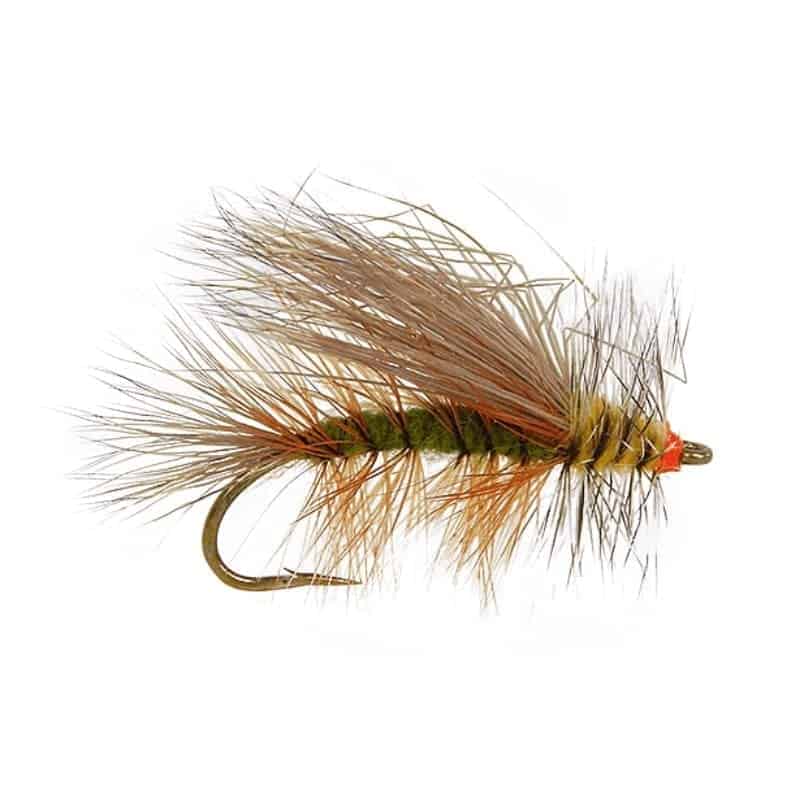

Dry-Dropper
A favorite way to fish stoneflies, especially from a boat, is running a dry dropper rig. Many late spring and early summer stoneflies are quite large and can handle a sizable trailing nymph behind. Large stimulators (or a Salmonfly if you’re lucky enough to fish a river with them) can manage size #14 or #16 stonefly nymphs running behind it and fishing this setup through fast water or on the banks from a boat can produce some incredible action. Those bigger stonefly dries are sometimes tied with foam, improving buoyancy even more and giving anglers the chance to use heavier nymphs. There’s nothing quite like tying on a size #10 foam stonefly and running a size #12 Rubber Legs underneath and pounding the banks from a drift boat. The action can be unbelievable and days fishing like this will certainly tempt you to stow away the smaller midges and mayflies indefinitely!

Veteran guides and recreational anglers alike are typically well-stocked with stoneflies in a variety of sizes, colors, and life cycle stages. They’re a true staple on nymph rigs during spring and summer and are always a good bet to produce fish even on the toughest days when the trout don’t seem to want anything. The ability to get such a protein-packed meal is something they just can’t pass up, and when fished correctly they can be one of the top fish-catchers for trout anglers across the country!


